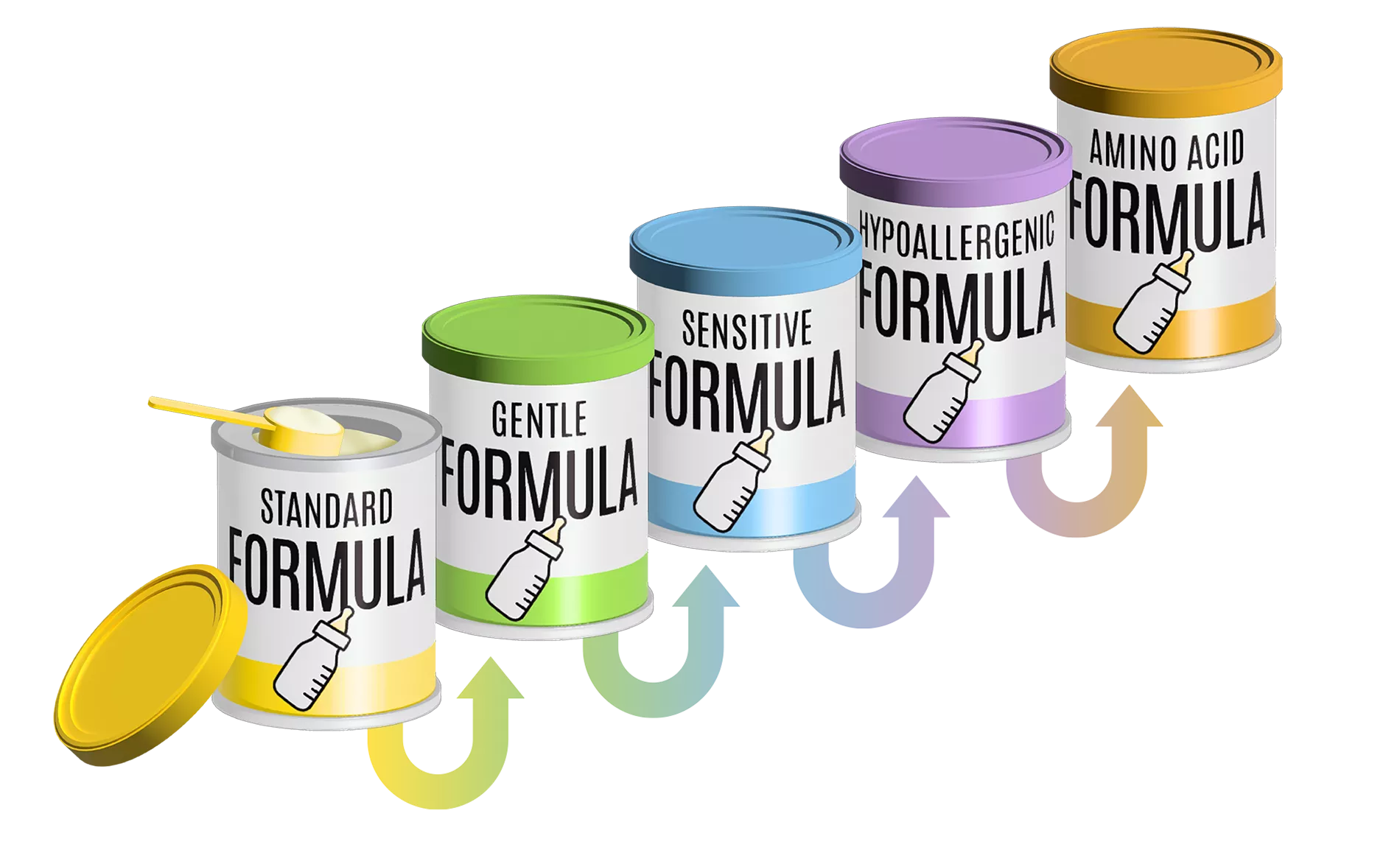Formula feeding your baby
Formula feeding your baby is a personal choice and is a healthy way to feed your baby. Our pediatric and primary care providers can help you choose a formula and answer any feeding-related questions you may have along the way.
How often and how much
During their first week, most formula-fed babies will eat every 2-4 hours. While initially the feedings are small at ½ ounce to 2 ounces, the amount they drink usually increased to 2 to 4 ounces per feeding within the first week. It’s important to learn your baby’s cues for hunger and fullness to help guide how much you are offering. For example, as your baby grows older and is finishing bottles consistently, you can increase the amount of formula to see if your baby is interested in more at each feeding.
Choosing the right formula
Your baby’s care team can help suggest formula options that will work for your baby. Every baby is unique and what works for one, may not work for another. Different formula types have different protein and carbohydrate sources, be sure to check the ingredients on the label to find your preferred blend. Most babies can tolerate standard formula, which is cheaper and may be more available in stores.
It may take a baby a little time to adjust to a new formula. However, if your baby is experiencing any of these symptoms, talk to your provider, as they might need to be seen for further evaluation:
- Excessive gas
- Rash
- Vomiting
- Excessive fussiness
If you choose to switch formulas, you should make small changes until you find one that your baby tolerates well.

Tips for successful bottle feeding:
- Position the bottle at an angle, instead of straight up and down. This way, the formula will not flow into the baby’s mouth unless they are actively sucking.
- Watch for signs that your baby is full – like turning their head and unlatching from the bottle. Stop feeding when your baby stops eating, even if there is still formula left in the bottle.
- Allow your baby to take breaks as needed. You can burp the baby during these breaks. Slowing the pace of eating can help with gas issues during the first few weeks.
- Use this time to bond with your baby. Hold your baby close, make eye contact, and monitor their feeding cues.
Mixing and Storing Formula
Formula comes in three forms:
- Concentrate liquid formula – needs to be mixed with water
- Powder – needs to be mixed with water
- Ready-to-feed – premixed/does not need to be mixed with water
It’s important to follow the mixing directions on the label when making formula. Always make sure the formula is not expired before feeding it to your baby.
Never warm formula in a microwave. Instead use a bottle warmer, or place in a bowl of hot (not boiling) water. Always check the temperature before feeding your baby.
Mixed powdered formula is good refrigerated for 24 hours. After 24 hours, throw away any mixed formula that has not been used.
Ready-to-feed or concentrate formula is good for 48 hours once opened and should be thrown away after 48 hours. It should be stored in a refrigerator once opened.
To reduce formula waste, mix only the amount of formula your baby will eat at that feeding. Formula that has been left in a bottle for an hour or more at room temperature should be thrown out.
Cleaning bottles
All bottle parts should be taken apart and cleaned thoroughly after every feeding, either in a dishwasher or by hand (with hot water and soap). You should sterilize bottles before their first use by boiling for 5 minutes or using a store-bought sterilization device (follow the appropriate directions by device). You may choose to continue to sterilize as needed for extra protection against germs.
Important reminders about formula feeding
Never make your own formula or feed your baby milk from an animal without first speaking to your baby’s doctor.
Never dilute your baby’s formula to make it last longer; always mix formula according to directions on the label.
If you are experiencing any feeding issues, call a member of your baby’s care team to discuss.